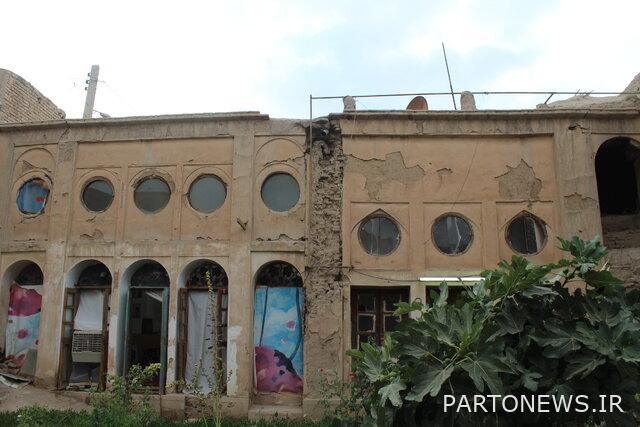Khan Khorasgan’s house in danger of destruction
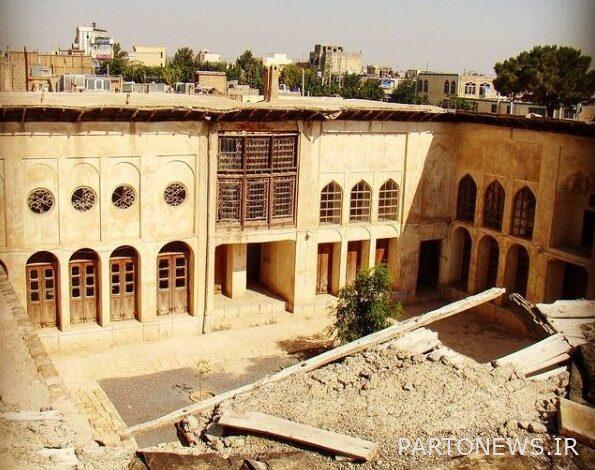
The historical houses of Arai, Atai and Rabbi, Rasoul Hosseini and Sadri have always been part of Khan Khorasgan’s house, but over the years, they have gradually become separate houses with walls and sales; The stories that the locals tell about this monument are unbelievable and mythical. It is often said that “the wall of Khan’s house is made of gold leaf”, “no one could see the house”. Necessary is being destroyed.
When we ask the people of Khorasgan about the historical monuments of the region, the first thing that comes to their mind is “Khaneh Khan”. But when we search more about this monument, we find nothing but a few images and a few duplicate texts. The stories that the locals tell about this monument are unbelievable and mythical. It is often said: “The wall of Khan’s house is made of gold leaf”, “No one could see the house”, “Before the Shah’s revolution, he came and took his antiques”! Some attribute this house to “Baqer Khan Khorasgani”, one of the rulers of the late Zand period, and say that there is a picture of his face in the houses. This Baqer Khan is the person whose famous spring exists in Paqaleh neighborhood or Tabarak castle of Isfahan.
But what is the story of this mysterious house, which in some sources is considered as one of the most beautiful historical houses in Isfahan? Documents of the General Directorate of Cultural Heritage, Handicrafts and Tourism of Isfahan Province indicate the existence of a 22,000-meter historical texture in the center of Khorasgan neighborhood. In these documents, 9 historical houses in this area are mentioned, some of which were purchased by this office, some are owned by private owners and some are jointly owned. But the Khorasganis in response to the question of whether all these houses are Khan’s house? They give different answers. However, most say, “No! No!” “The house of the late Seyyed Rasool Hosseini and the house of the late Arai are the house of Khan.”
In this article, we try to walk in this historical context and search for its amazing secrets. For this purpose, we have examined these 9 heritage houses one by one in Khorasgan, and finally we try to discover “Khaneh Khan”.
In the inheritance documents, 9 houses have been introduced with the names of “Rasoul Hosseini”, “Saeidian”, “Naderi”, “Kamali”, “Mohammadi”, “Sadri”, “Arai”, “Atai and Rabbi” and “Hassan Hosseini”. The files of the first three houses are more complete than the other houses.
The house of the late Seyyed Rasool Hosseini, which is one of the largest and most beautiful of these houses and is jointly owned by personal and heritage and includes various sections such as entrance, porch, double sash room, five-door mirrored room, garden, summer room, guard towers and “cowboy ” Is known. The most important part of this 3,000-meter house and garden is the five-window mirrored room and the double-sided sash room.
From the very beginning, passing through Sabat leading to this house and observing its entrance, every viewer realizes that he is going to face magnificent houses. After passing the porch and corridor, we reach the courtyard. The double sash room, in its center, has a precious five-door sash and exquisite Qajar paintings, and especially a marble stone pool. The beauty of this room is such that despite the partial collapse of the ceiling and the theft of some of its paintings, it still retains its glory. Interestingly, this sash opened to another part of the house and is now blocked and separated.
The other part is the beautiful room with a mirrored window. In this room, pictures of characters are painted, which according to some researchers, the image of Baqer Khan Khorasgani is famous.
Sayyid Javad Hosseini, one of the owners of the house, who is also a descendant of the main owners of the house, says: These paintings are a picture of Mohammad Ali Khan Amin al-Ruaya and Arbab Mohammad Karim, from the houses of Khorasgan village in the Qajar period. This seems to be true according to Naderi Ghani’s rare researches and they can not be considered as Baqer Khan’s images.
In the garden of this house, which no longer has any signs of greenery and beauty, there is a ruined summer room. At the end of this room, a beautiful fireplace is on display. But the two towers of this garden are not in good condition either. One of them is on the verge of collapse and part of it has been repaired by the municipality and the other is not happy. Behind one of these towers is a cow that is not visible due to the rubble of the walls.
Javad Hosseini says: This house has big and small problems. By renovating the house and changing its use, I am trying to both welcome the curious and enthusiastic people of this work and to cover the staggering costs of maintaining it. Of course, today there is a possibility of collapse of various parts of the house, such as garden towers, which is worrying and municipal and heritage contributions seem insufficient.
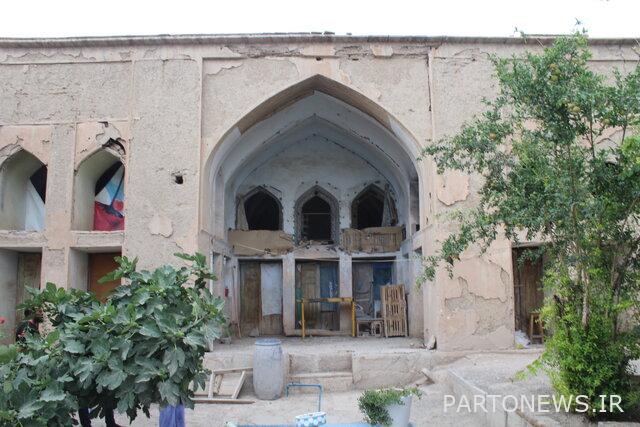
He continues in a lamentable tone: I hope the General Directorate of Cultural Heritage will reach this beautiful historic house.
Another house that is located under Sabat Khan alley is Saeidian’s house. A small house that, despite its clumsy renovation, still retains its beauty. This house, which is owned by the General Directorate of Cultural Heritage, is intended to house the employees of that organization. There is a beautiful fireplace in one of the rooms of this house. Another house in front of Saeidian’s house is Kamali’s house; Semi-ruined houses that are jointly owned by personal and heritage. Its beautiful, tall rooms, windows and porch showcase its ancient splendor. However, parts of this house have been completely destroyed and other parts are not far from complete collapse.
To the right of Saeidian’s house is a house registered under the name of “Mohammadi” house. Where no one lives, a fate similar to that of Kamali’s house is not far off.
The fifth house, which is one of the most beautiful and unknown houses in this historical context, is Sadri House. Windbreaks, inscriptions of poems and decorations such as moqarnaskari are the features of this historical house.
If we want to know other houses of this historical context, we have to go a little further and near Golzar Mosque in Khorasgan; Where there is a porch and sabbat and several houses. The first house is a house; The house where the most beautiful mysterious parts of this historical context can be seen. The owners of this house, who are the descendants of Khorasgan houses, are very cautious and strict with the enthusiasts of this house. The few pictures of this house show its unique glory. The house consists of several parts, including a cow, a madhouse, a pantry, a kitchen, a toilet and a mansion. But the most beautiful parts of it are in the “mansion” part of this house. Arsi Gol and Arsi Naghsh are two brilliant parts of this house and have the most beautiful Iranian architectural decorations. The interesting point in Arsi Gol is the painting of Iranian stories that is depicted in its moqarnas. On each side of the mansion is one of these architectural and artistic masterpieces; On one side is the flower sash, on the other side is the Naghsi sash and on the other side is the sash around the house of Seyyed Rasoul Hosseini, and on the last side of the windbreak porch there was the Sadri house. These houses have been separated by walls in recent years.
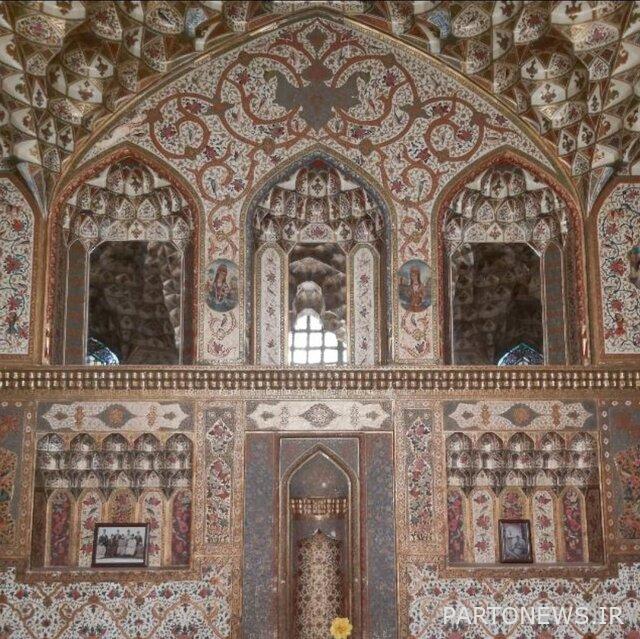
We return to the vestibule and Sabat in the northern part. Where one of the doors leads us to an open courtyard that once housed Khan Anbar’s warehouse and carpet weaving workshop, but despite the devastation of recent years, it still bears traces of the past.
The other two doors, however, take us to the houses known as the “Naderi” and “Seyyed Hassan Hosseini” houses. Formed as a single house, the two houses are jointly owned by the cultural heritage and privately owned and have beautiful sections, which are evidenced by the few pictures available.
The ninth and last house, which is one of the most abandoned houses in this historical context; It is the house of Atai and Rabbi. The door of this house is located outside Sabat and the mentioned porch. The information available from this house is limited to a few images and a few manuscripts in the heritage files.
With a brief explanation of these houses, the main question now is whether they are all the “Khan House” that the people of Khorasgan call? Based on the research that has been done in this regard, it should be said that it seems that the four houses of decoration, Atai and Rabbi, Sadri, Seyyed Rasoul Hosseini and the warehouse and carpet weaving section, according to their plan and the words of the house owners, formed a single house. It was known as “Khaneh Khan” and in the following years, it was gradually turned into separate houses by walling and selling to others. With this in mind, it should be said that if we do not say that this house is the largest historical house in Isfahan, at least it can be considered as one of the largest historical houses in Isfahan and Iran, which is being destroyed and destroyed far from any necessary attention. This issue is important for the city of Isfahan because despite such a huge and important potential in Khorasgan region or district 15 of Isfahan municipality, no scientific and groundbreaking program in terms of tourism projects is on the agenda.
But this story does not end there. In addition to these houses, it seems that there are many other unknown and valuable houses in the vicinity of this neighborhood and in Khorasgan region in general, which can be seen even through aerial and satellite photographs. One of the valuable houses in this area, which had been half-ruined for many years, was destroyed in the spring of 1399 AH, and only the spaces that show its beauty and architectural importance remained.
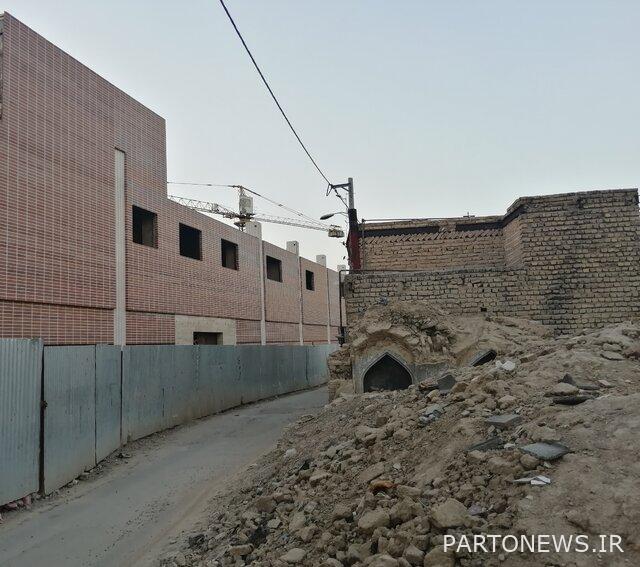
Of course, the General Directorate of Cultural Heritage, Handicrafts and Tourism, and even the Municipality of Isfahan, have presented plans to revive the Khan Khorasgan historical complex in recent years, but these flawed plans have remained only a plan. For example, in a plan prepared by the General Directorate of Cultural Heritage, Handicrafts and Tourism of Isfahan Province with the aim of reviving the historical context of Khorasgan, after many preparations, proposals have been made that are completely contrary to the spirit of this historical context. Just a look at the final map provided and the user definition for the historical spaces and houses of Khan Complex will amaze every reader and viewer, and this plan and map raises many questions in the minds of those who are interested. How the house decoration and Seyyed Rasoul Hosseini, with the mentioned historical elements, are considered as living spaces, or on what basis the whole garden of Rasoul Hosseini House, which is a place of entertainment and recreation, as a workshop, exhibition and handicraft shop in It is considered or why the space that used to be a carpet weaving workshop, instead of reviving its former function, along with the location of the stables and storage of this complex has been proposed for the construction of a restaurant and a teahouse, which is just a corner of these questions.
On the other hand, for many years, a project called “City Commercial Complex; Khan Khorasgan commercial, administrative, cultural and tourism project “with a large area, is being implemented by the city council and municipality of Khorasgan (before 1392 AH) and Isfahan municipality (after the annexation of Khorasgan to Isfahan in 1392 AH) . This plan, which seems to be similar to one of the economic projects of Isfahan Municipality (such as Jahannama Tower or Chaharbagh Commercial Complex), by abusing the name of this historical complex, gradually removed cultural and tourism titles from its title and several times and for various reasons. Unknown The name of this project has been changed to other letters. This project is being implemented along with the historical complex of Khan Khorasgan and has caused a lot of damage to the historical context of Khorasgan and Isfahan.
Finally, it should be said that this article tries to introduce one of the valuable and historical contexts of Khorasgan and Isfahan and hopes that by knowing this collection as much as possible and avoiding economic ambitions, it will cause more attention and better preservation and protection of one of the most important historical contexts of Iran. Provide.
